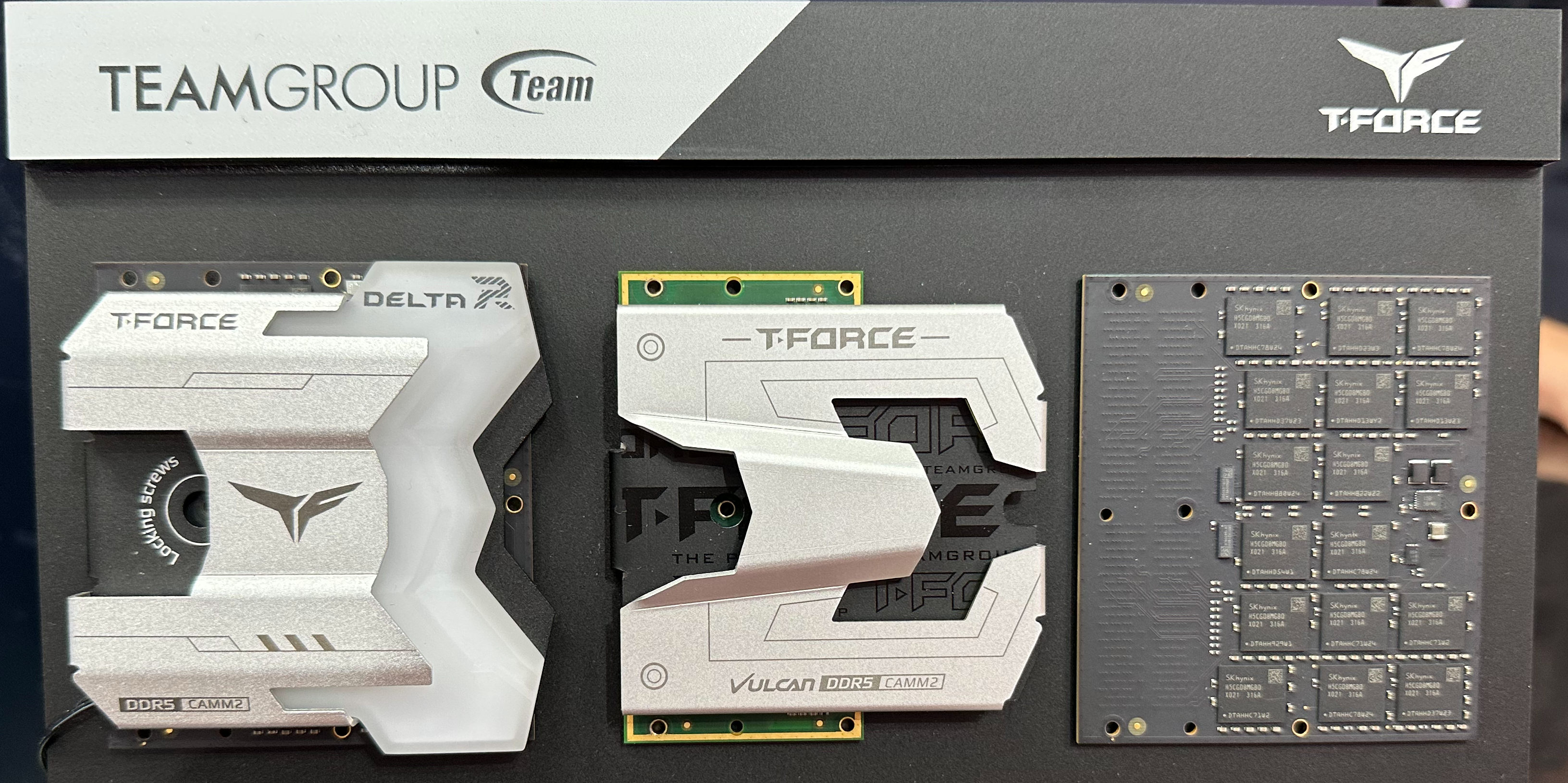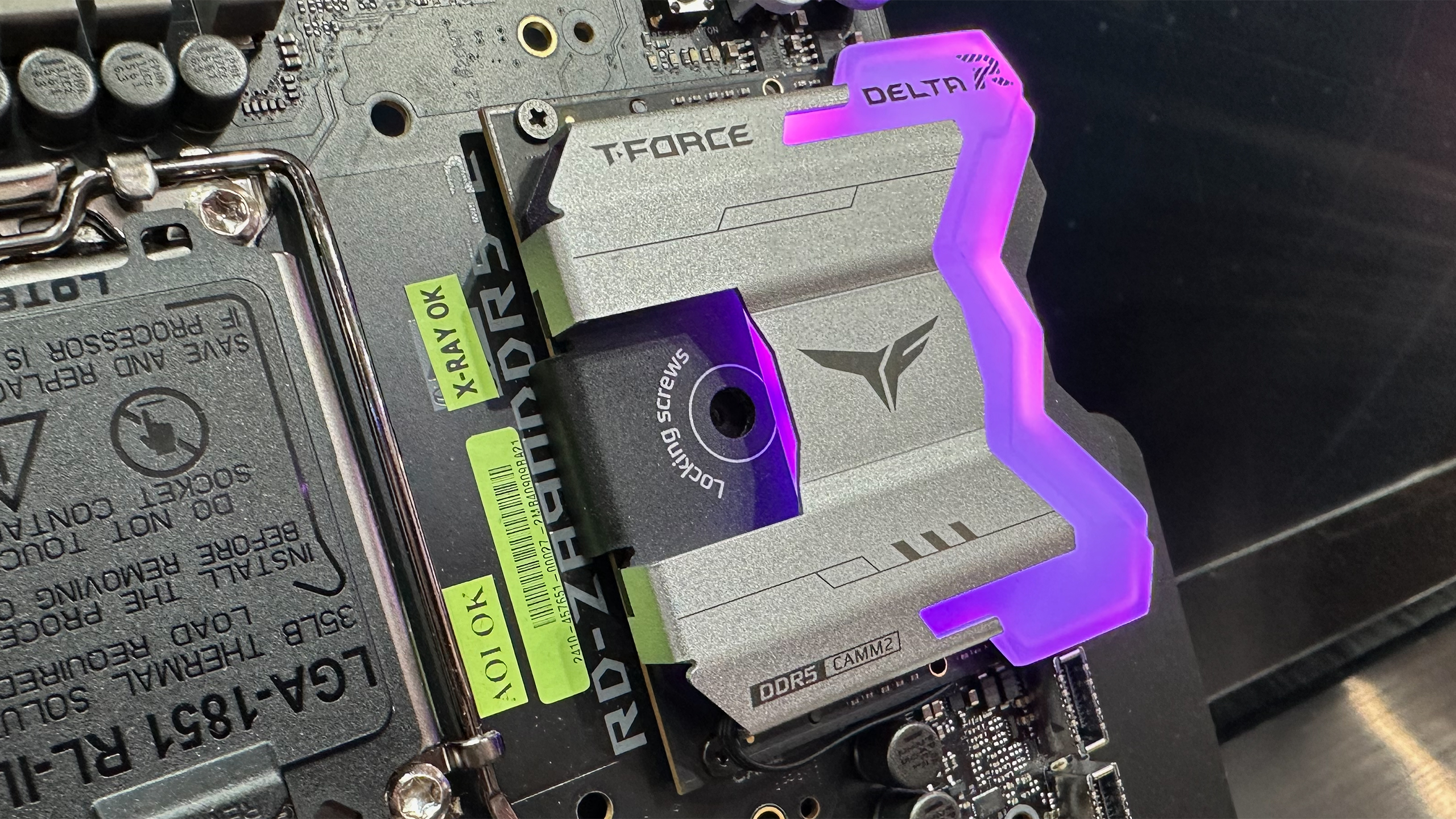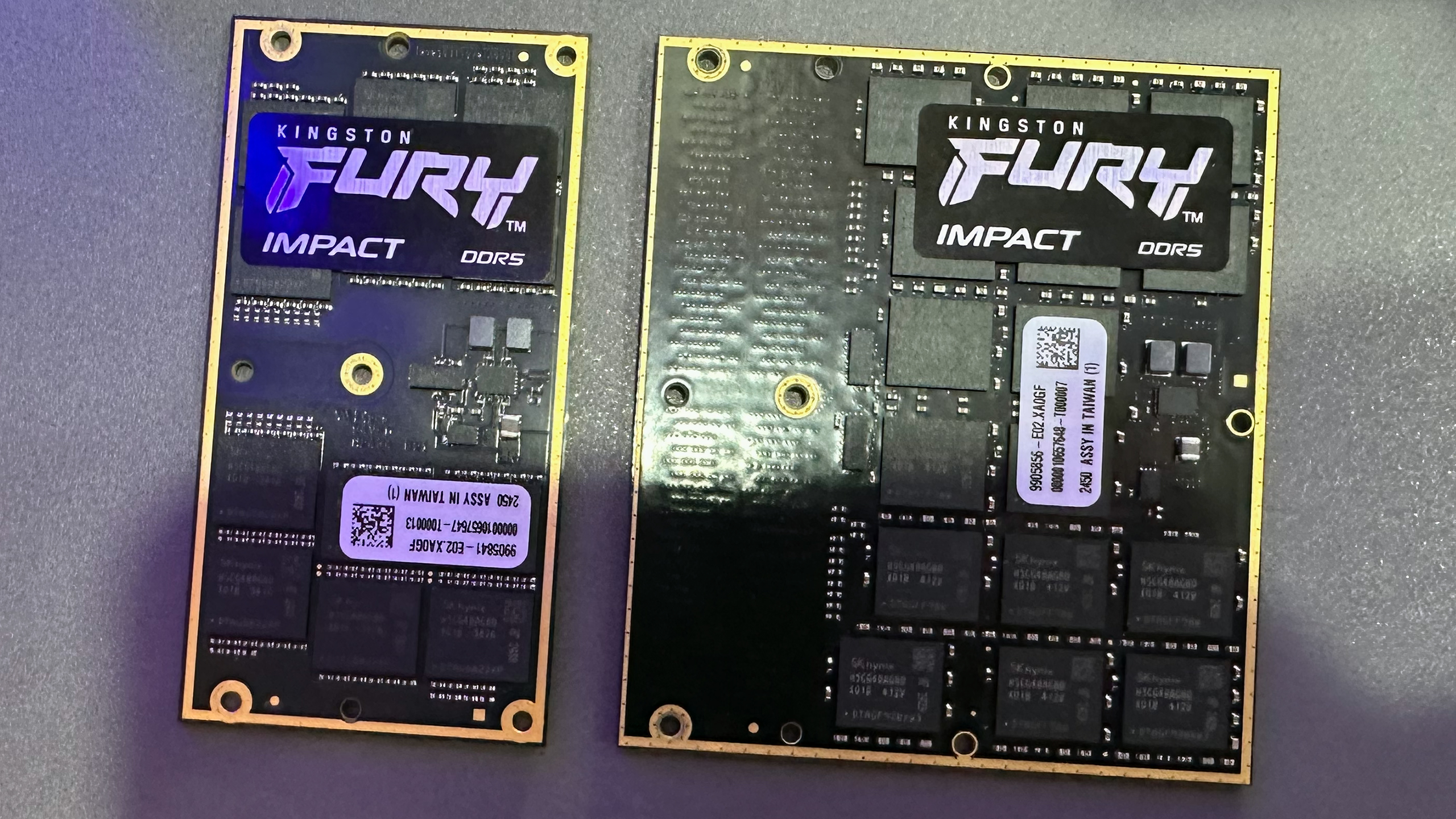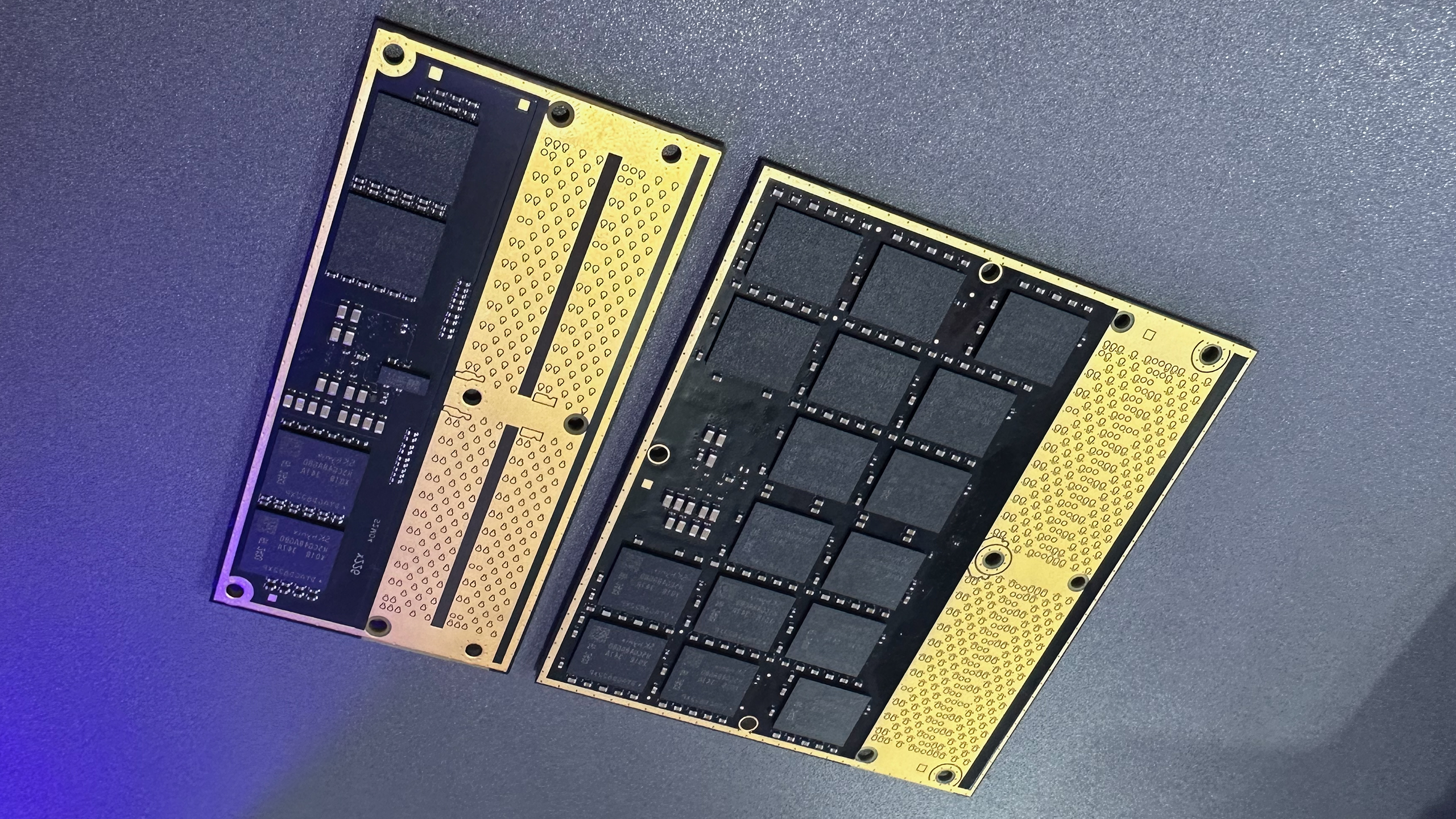Multiple manufacturers of enthusiast-grade DRAM modules demonstrated compression-attached memory CAMM2 modules at Computex 2025, indicating their interest in this form factor. However, none of the manufacturers are confident that these DDR5 modules will hit the market as they are unsure when motherboard makers will release suitable platforms.
We saw CAMM2 memory modules from G.Skill, Kingston, and TeamGroup at the trade show in Taipei, Taiwan. Modules from G.Skill and TeamGroup come with elevated data transfer rates (DDR5-10,000 and DDR5-8000, respectively). Additionally, TeamGroup equipped its CAMM2 module with heat spreaders and addressable RGB LEDs, indicating that they are aimed at enthusiasts. G.Skill even demonstrated an overclocked version of its DDR5-10,000 CAMM2 module with shrunk timings.
|
Company |
Transfer Rate |
Timings |
Capacity |
Voltage |
DRAM |
Note |
|
G.Skill |
DDR5-10000 |
CL56 70-70 |
64GB |
1.45V |
SK hynix |
announced |
|
G.Skill |
DDR5-10000 |
CL56 35-35-80 |
64GB |
1.45V |
SK hynix |
demonstrated |
|
Kingston |
? |
? |
32GB, 48GB, 64GB, 96GB, 128GB |
? |
SK hynix |
– |
|
TeamGroup |
DDR5-8000 |
CL42 50-50-84 |
32GB |
1.4V |
SK hynix |
– |

Kingston demonstrated two versions of its enthusiast-grade Fury-branded CAMM2 modules (just like G.Skill) but did not publish the speed bins it plans to support. Additionally, while Kingston partnered with Gigabyte’s Aorus for the Z890 Aorus Tachyon Ice CAMM2 motherboard, its advertising materials state that its Fury Impact DDR5 CAMM2 modules are “ideal for notebook and mobile workstation users.”
However, demonstrations of compression attached memory modules at Computex were not limited to CAMM2. SK hynix demonstrated its LPDDR5X-based SOCAMM2 modules as well, though this form-factor is for now specific to Nvidia’s Grace Blackwell platforms. Several makers of modules — including Micron and SK hynix’s affiliate Klevv — also showcased LPCAMM2 modules mainly aimed at compact and mobile systems, which highlights that the form-factor is gradually becoming more widespread, and these makers envision aftermarket demand for them.

CAMM and LPCAMM2 memory modules have an indisputable advantage over regular DIMMs and SODIMMs in terms of capacity density and interface width (128-bit) over regular DIMMs. CAMM2 also promises to improve signal integrity by reducing electrical path lengths, enabling higher data transfer rates and better power efficiency. However, memory modules can increase performance potential on modern platforms by adding clock driver chips to their products even without adopting an all-new form-factor.
CAMM2 also comes with trade-offs compared to conventional DIMMs. Adoption is still limited, and upgradability, while possible, is not as user-friendly as the straightforward plug-and-play nature of DIMMs. For now, the ecosystem for CAMM2 modules is also nascent, as while leading motherboard makers are all teasing CAMM2-supporting platforms, they have not yet committed to releasing them. To that end, only select makers of memory modules have even developed prototype CAMM2 modules.
One of the peculiarities of the market of enthusiast-grade PC hardware is that it tends to adopt all the latest and greatest technologies and then figure out whether they make sense regarding performance and cost. SSDs, mechanical keyboards, and ultra-high-resolution displays used to be a prerogative of enthusiast-grade builds for gaming. Today, they are used in mass market PCs. However, some technologies — 3D monitors, hybrid storage drives, and Intel’s BTX form-factor — flounder in the market, whereas other — HBM, multi-GPU setups, PCIe add-in-card SSDs — become successful niche products. Only time will tell what happens to compression attached modules on the desktop market.
Follow Tom’s Hardware on Google News to get our up-to-date news, analysis, and reviews in your feeds. Make sure to click the Follow button.


